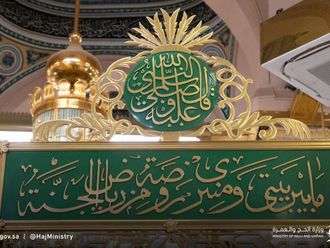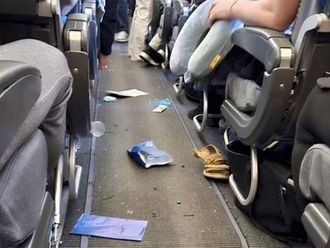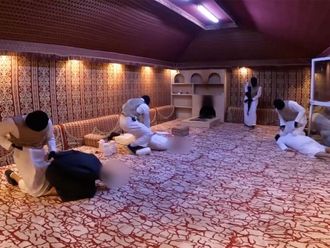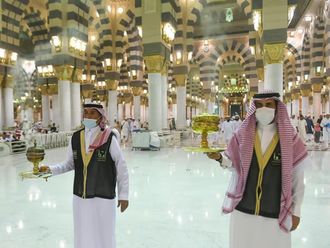
Abu Dhabi: The Saudi security authorities in the holy capital Mecca arrested two Asian residents in connection with the possession of seven pieces of the Kaaba cloth (Kiswa), while they were being shipped abroad through the Saudi Post branch in the Al Shasha district in Mecca, police said.
“Two Pakistanis were arrested, while they attempted to dispatch seven pieces of the Kaaba cloth through the Saudi Post branch in Al Shasha district,” police said.
The men told interrogators they had bought the Kaaba Kiswa pieces from an Indain vendor on the 60th Street for SR300.
The men were remanded in custody pending moving to the Public Prosecution for further questioning and trial, police said.
The Kaaba Kiswa is replaced once a year on the 9th day of the month of Dul Hijjah after the pilgrims go to Mount Arafat, in preparation for receiving worshippers the next morning, which coincides with Eid Al Adha.
The colours of the Kaaba’s coverings have seen regular changes through the ages.
The Prophet Mohammad (PBUH) covered it with white-and-red striped Yemeni cloth, and Abu Bakr Al Siddiq, Umar ibn Al Khattab, and Uthman ibn Affan covered it with white. Ibn Al Zubayr covered it with red brocade.
During the Abbasid era, it was draped once with white and once in red, while the Seljuk Sultan covered it with yellow brocade. The Abbasid Caliph Al Nassir changed the Kiswa’s color to green and later to black brocade, and this has remained its color to the present day.
Black was finally chosen at the end of the Abbasid era because it was durable and could withstand being touched by visitors, pilgrims, and people from different cultures from around the world.
With the continuation of the Umrah season, the Kiswa was lifted to the middle of the Kaaba to preserve it and to prevent people from touching it.
During the Saudi era, the Kiswa has received great attention.
The Saudi founder King Abdul Aziz gave directions for the establishment of a private house for making the Kiswa in Ajyad neighbourhood close to Mecca’s Grand Mosque, the first house dedicated to weaving the Kiswa in the Hijaz since the Kaaba was covered in the pre-Islamic era until the present time.
It was the factory where the first Kiswa in the Saudi era was manufactured in Mecca. Production was later moved to Umm Al Joud. The new location was equipped with the latest advanced machines in the weaving industry at the time and continued to produce Kiswas that surpassed all previous ones.








